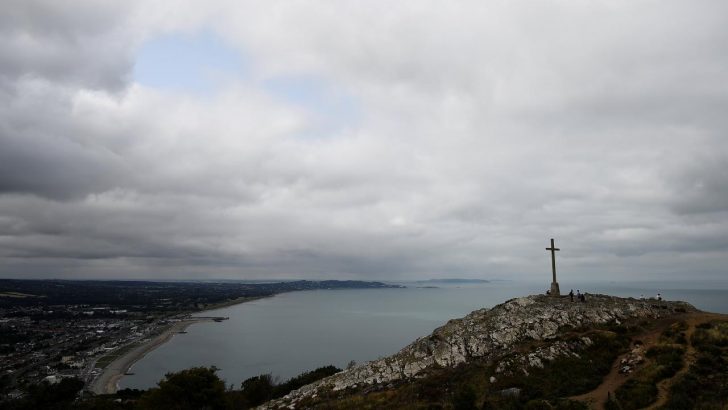Failures to take hard choices continue to haunt the Church, writes David Quinn
The issue of abuse of children by priests has loomed large over the visit of Pope Francis to Ireland this week, and over the World Meeting of Families, the reason for him being here. The scandals have re-erupted in Chile, Australia and in the US with the release of a huge investigation into abuse by priests in six Catholic dioceses in Pennsylvania.
Responding to that report, Pope Francis this week in Rome said: “The heart-wrenching pain of these victims, which cries out to heaven, was long ignored, kept quiet or silenced.” He fell short of detailing how bishops guilty of covering up abuse should be held accountable.
The Pennsylvania report is as shocking as the official investigations that have taken place into abuse here in Ireland. A roughly similar percentage of priests in Pennsylvania have been accused of abuse as in dioceses such as Ferns and Dublin. The Pennsylvania investigation looked at the period from 1947 until the present, that is to say, at a seven-decade period. It found that just over 300 of the 5,000 who have served in the State over that timespan have been accused of abuse, which is to say, 6% of the total.
The usual pattern was found; the worst period for abuse was the 1970s and 1980s. 90% of the thousands of cases of abuse predate 1990 and none have been found so far in the years after 2002. This is not to say there are no so such cases because it can take victims a long time to come forward, but it is to say that the robust children protection systems now in place in countries like Ireland and the US seem to be working.
Investigation
The most comprehensive investigation of the abuse problem to date was conducted in the US by John Jay College on behalf of the American bishops. It looked at the period 1950 to 2002, later updated to 2010.
It investigated the files of over 100,000 priests in every US diocese, including members of religious orders. It found that more than 4,200 had claims of abuse made against them. The rate among diocesan priests was almost 5% and among religious order priests it was about two points lower than that.
The absolute epicentre of the crisis occurred between 1976 and 1981. The vast majority of victims (81%) were boys, and most of these were aged between 11 and 14.
Abuse cases broke into public consciousness in the 1990s in the US as here in Ireland because victims began to gather the courage to come forward.
When the John Jay report also found, just like the official investigations here, and the most recent one in Pennsylvania, was a constant pattern of cover-up by bishops until relentless pressure from victims and the media forced them (in the main) to behave differently.
Prior to the 1990s, self-protection was put far above child-protection and even now the self-protective instincts are strong as we see from the reluctance of bishops to resign when it has been discovered they covered up abuse cases in decades past.
The report into the Dublin archdiocese, released in 2009, shows another familiar pattern, namely that in the 1970s and 1980s, bishops adopted a ‘therapeutic’ approach to the issue of child abuse.
This approach meant the priest was seen as the real ‘victim’, not the child. The priest was regarded as someone suffering from an illness and therefore he was sent away to be ‘cured’ by a therapist. He was then reassigned to another parish where he abused more children.
This was absolutely disastrous and enabled abusers because they would know that the worst that could befall them was being sent away for a few weeks or months to a counselling centre rather than being handed over to the law.
We cannot overestimate the role of evil in all this. Abuse of children is evil and covering up abuse is evil. The human capacity for self-deception is enormous and evil works through it and takes advantage of it. Thus, bishops will have convinced themselves that sending the accused priest away for ‘treatment’ was the right thing to do when, in fact, the bishop was protecting both himself and the priest from reputational damage. Deep down, the bishop will have known this.
The example of Jesus is inextricably linked to the Cross. Sometimes we must take a hard path and there can be redemptive value in doing so. The Church should know this above all, in particular the appointed leaders of the Church, namely the bishops. The hard path when confronted by abuse was to report it to the civil authorities. The easy path was to do what they did; cover it up and send the priest away to be ‘cured’. Bishops might also have deluded themselves into thinking this was the ‘merciful’ thing to do because punishment is not merciful at face value, even though it is just.
The result of not taking the hard path is that the damage done to the Church when the scandals did emerge has been incalculable. Since then, the Church has enormously improved its child protection procedures and the Church has become a vastly safer place for children. Recent media reporting of the scandals de-emphasises or ignores this and gives the public the impression that the problem is still burning out of control.
The damage caused by the scandals goes beyond the victims and the Church and ordinary, badly demoralised Catholics to society at large.
The loss of the Church’s moral authority made it extremely difficult for it to be an effective voice in the recent abortion referendum. On the contrary, anger at the Church contributed to the victory of the pro-abortion side. The result is that the legalised, publicly-funded, State-authorised destruction of thousands of unborn human lives will now take place in Ireland annually, a true moral disaster.
The scandals have also undermined the efforts of lay Catholics who had absolutely nothing to do with them and are as horrified by them as anyone else.
What should have happened when the scandals first emerged in this country in the mid-1990s is that every bishop at the time should have resigned to show their moral seriousness about the matter. Once again, they failed to take the hard path and therefore we continue to live with the terrible consequences.


 David Quinn
David Quinn
